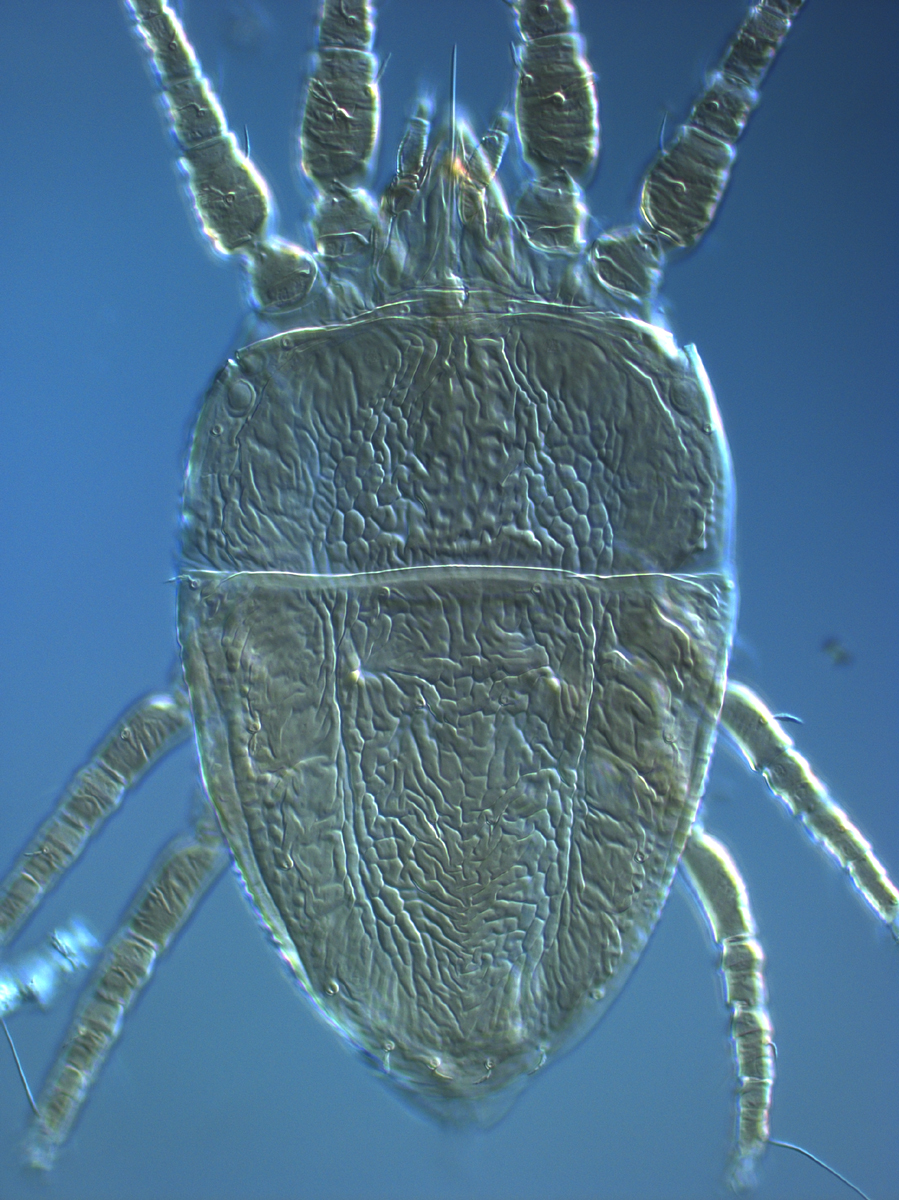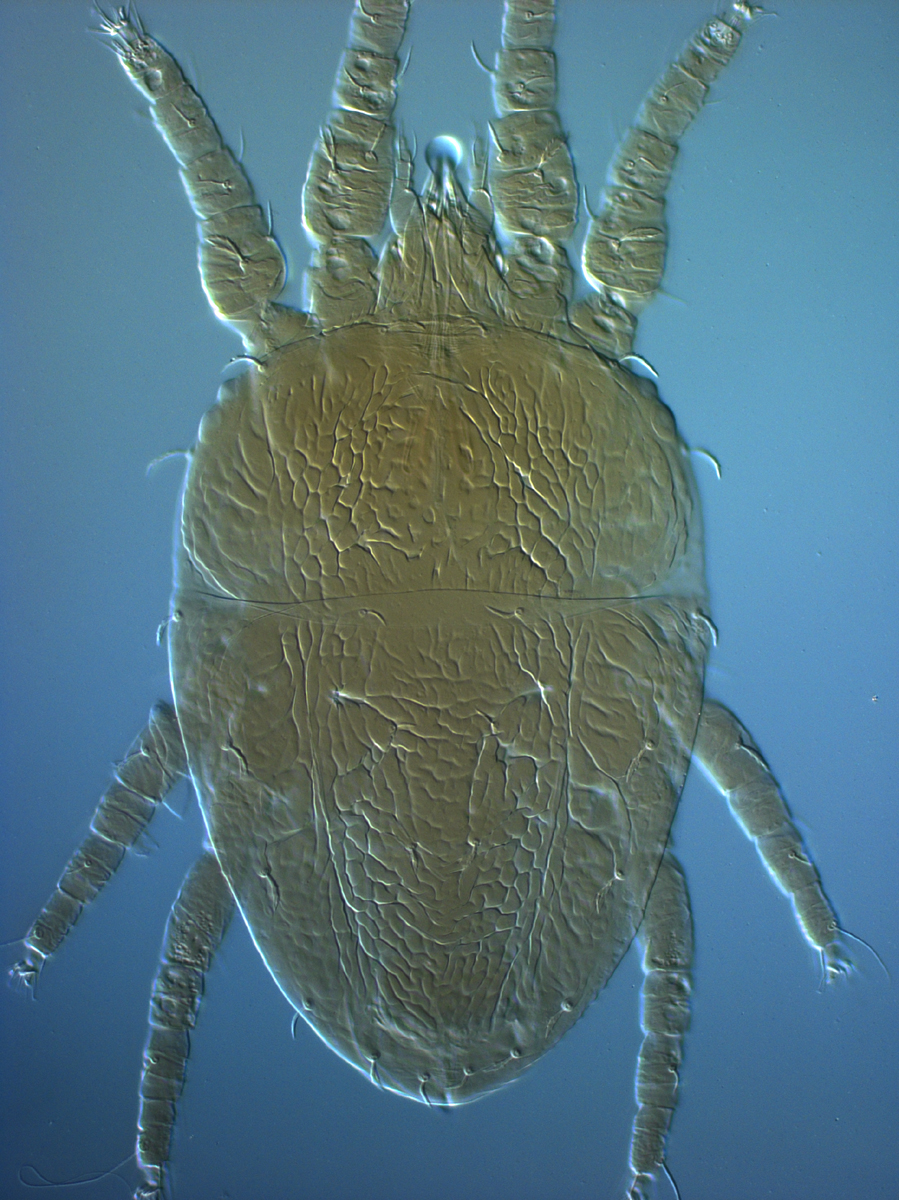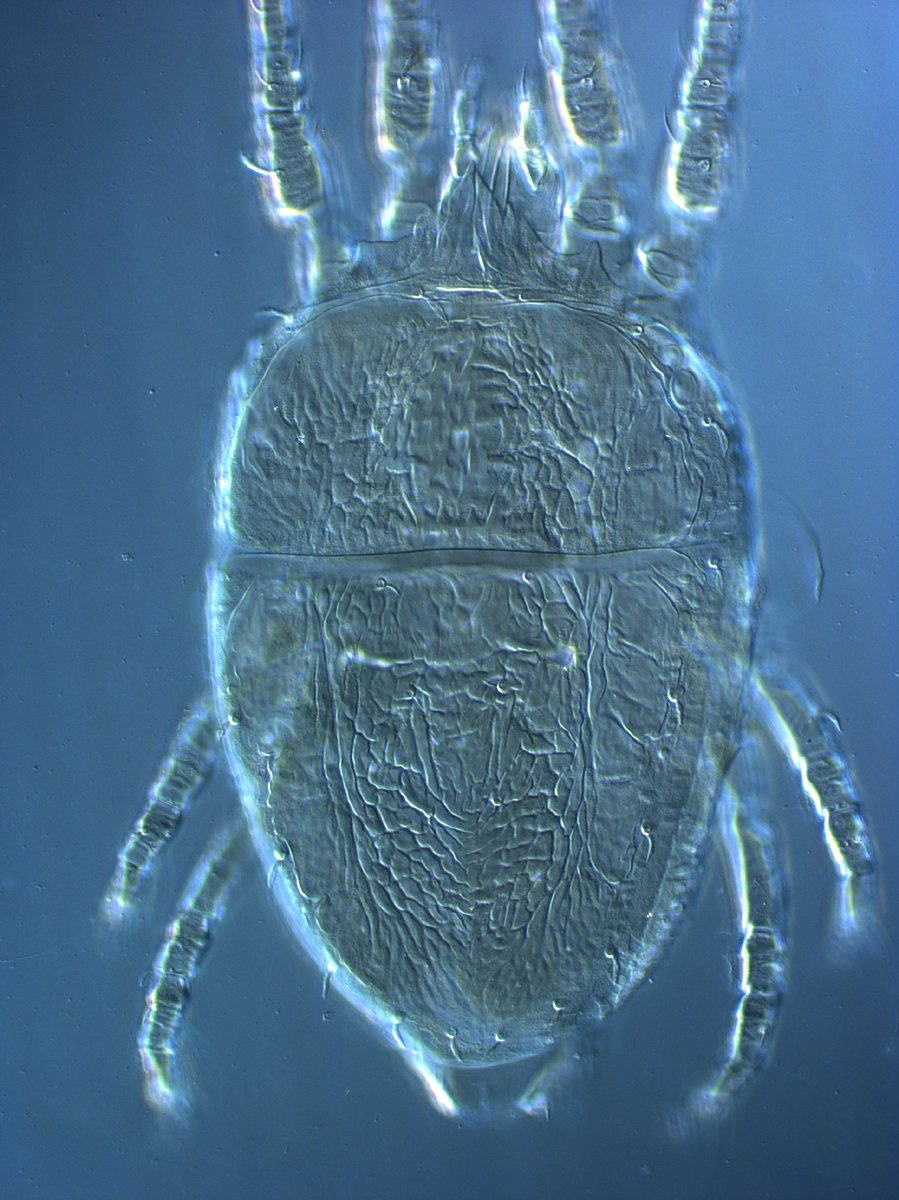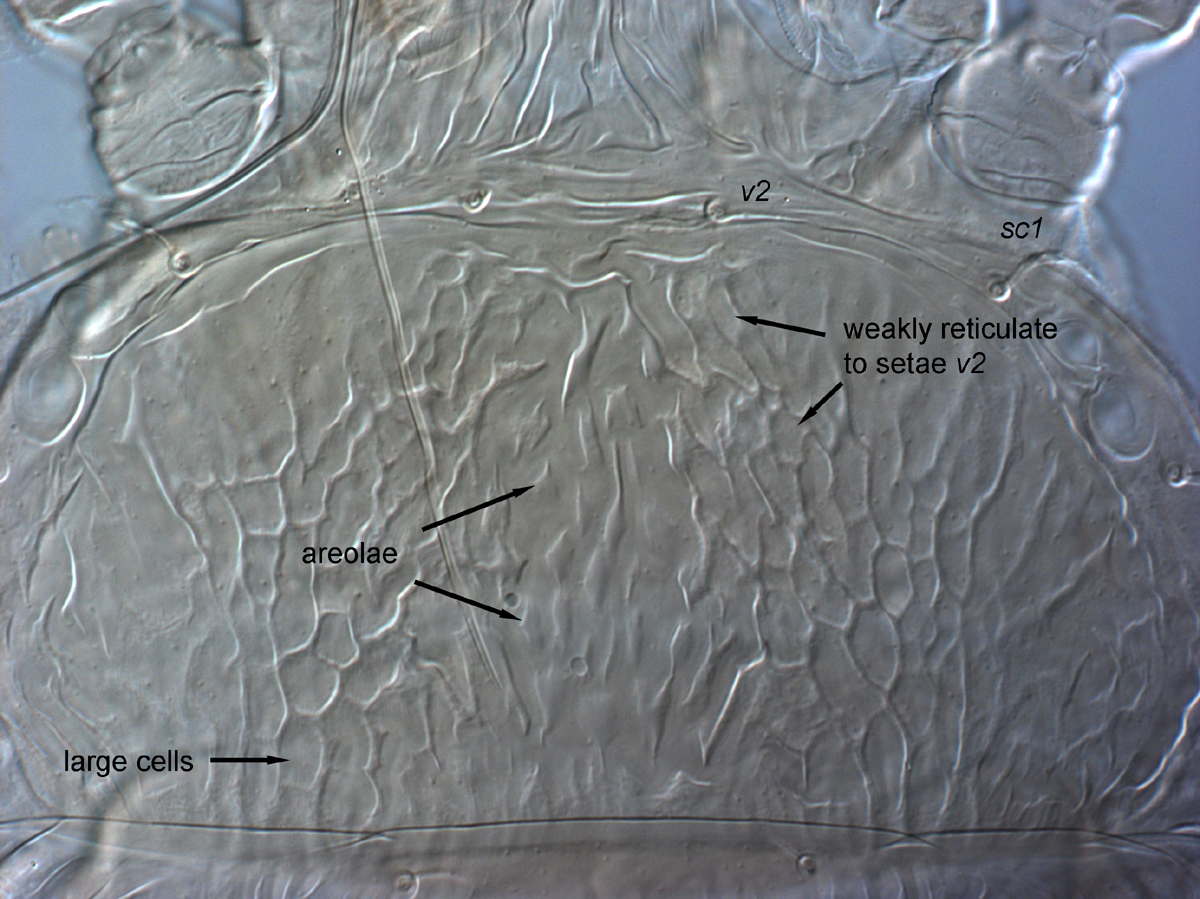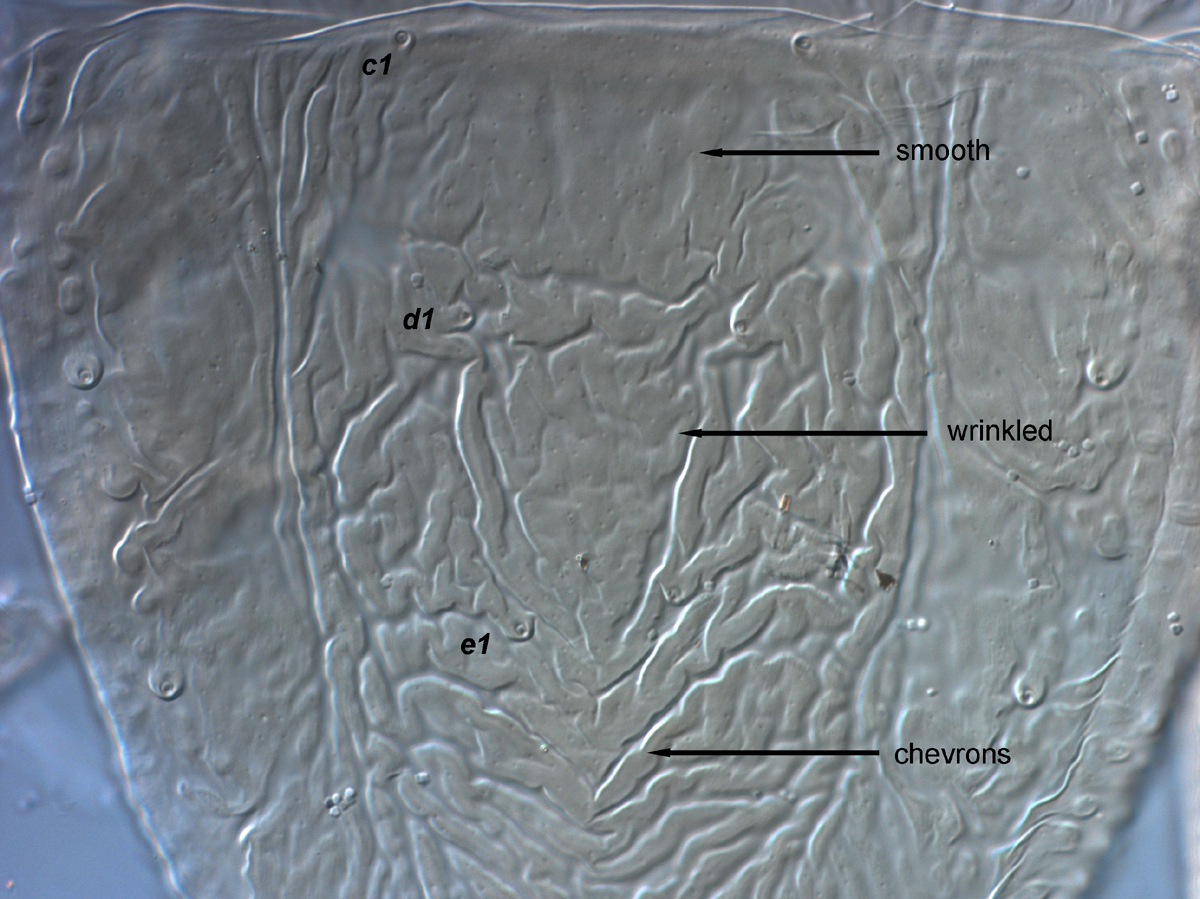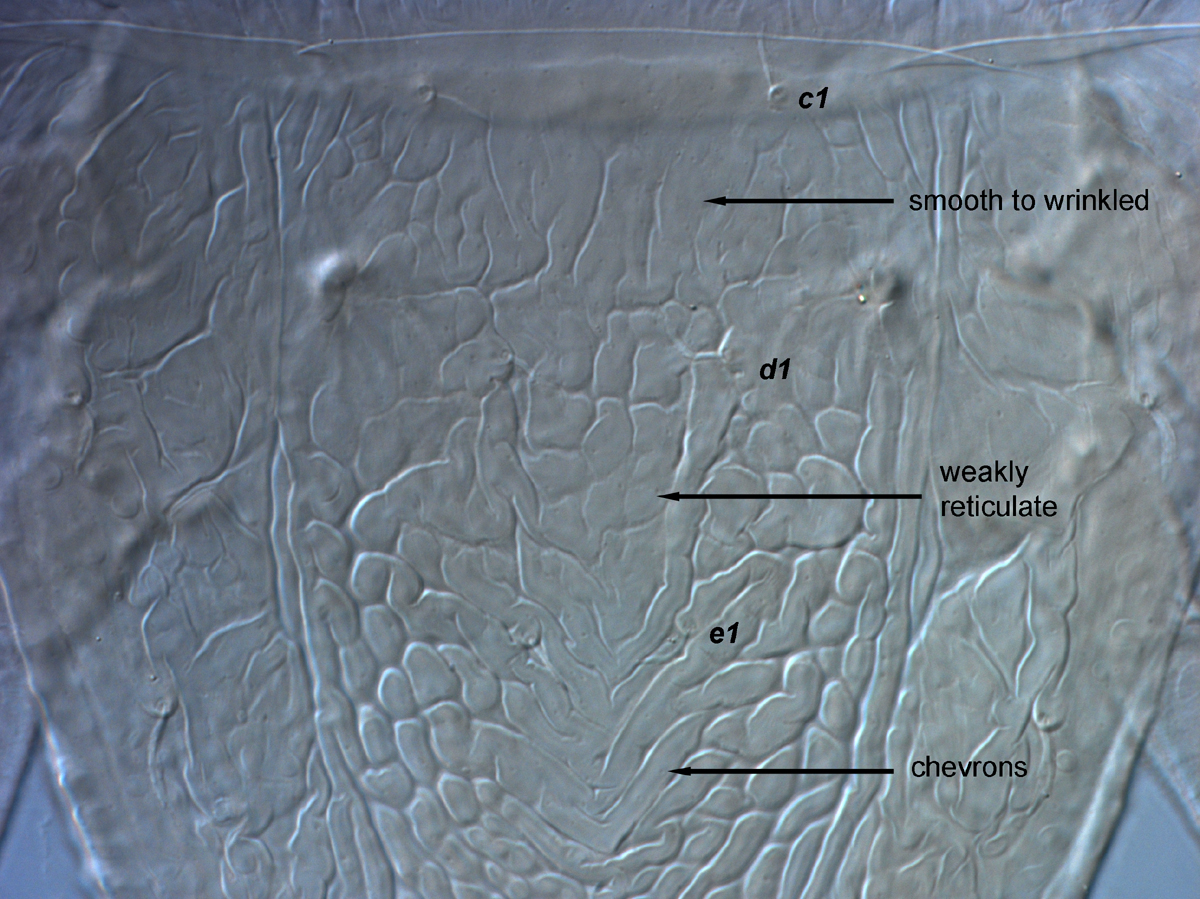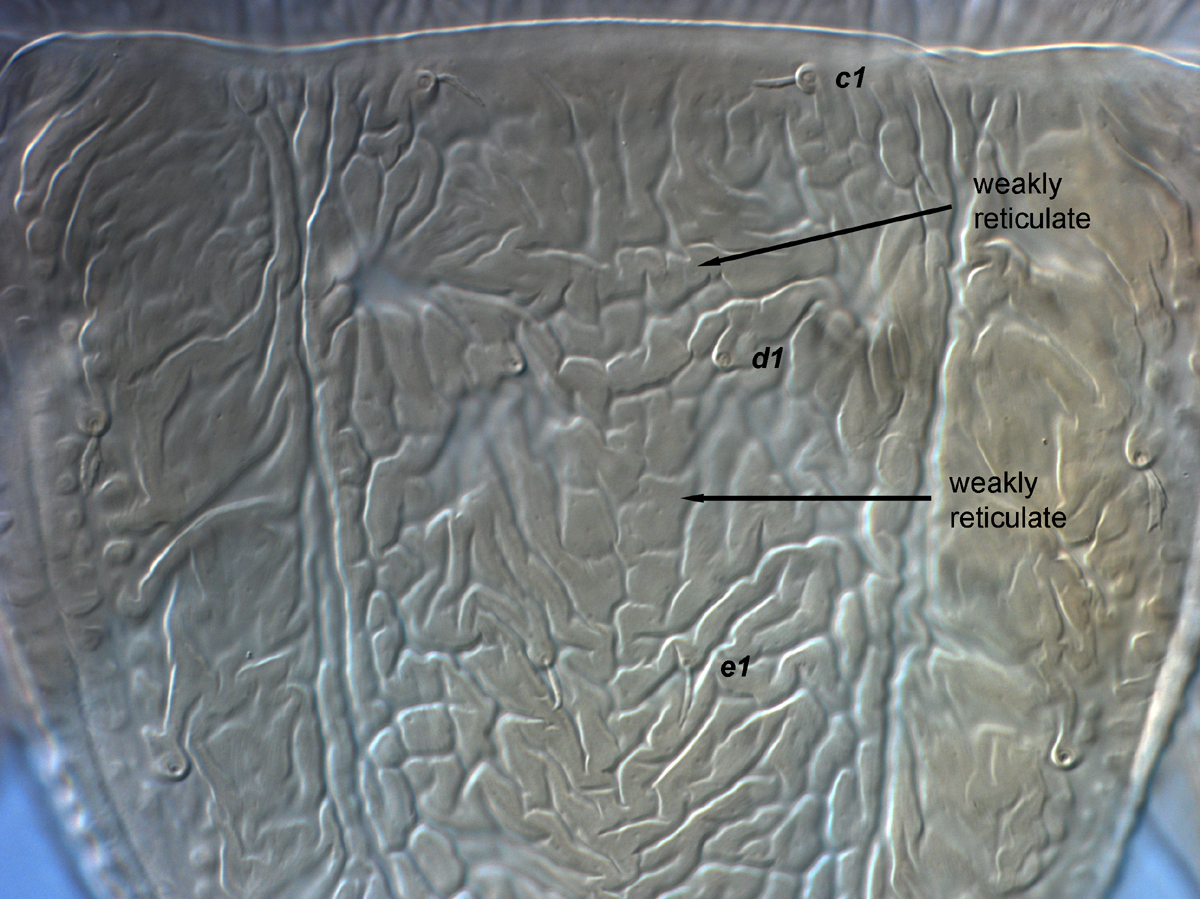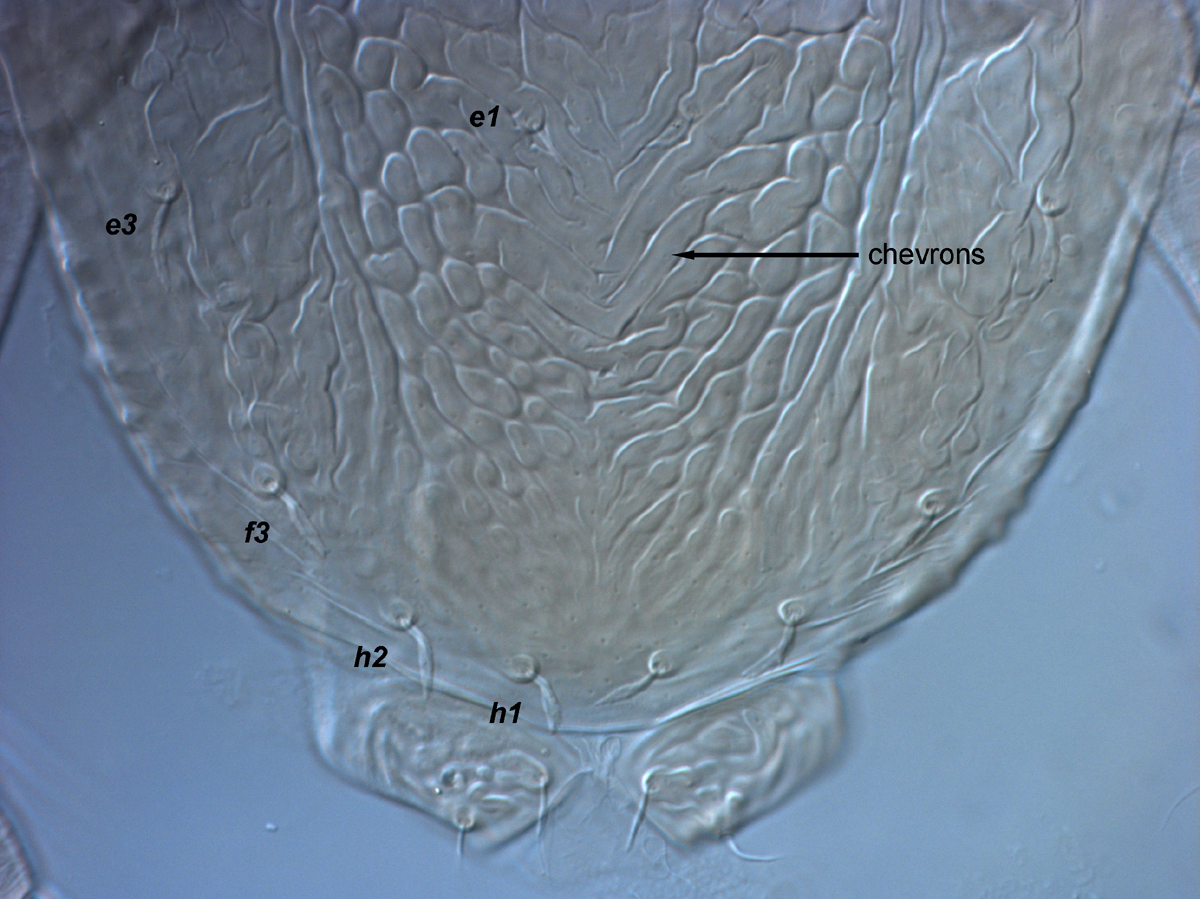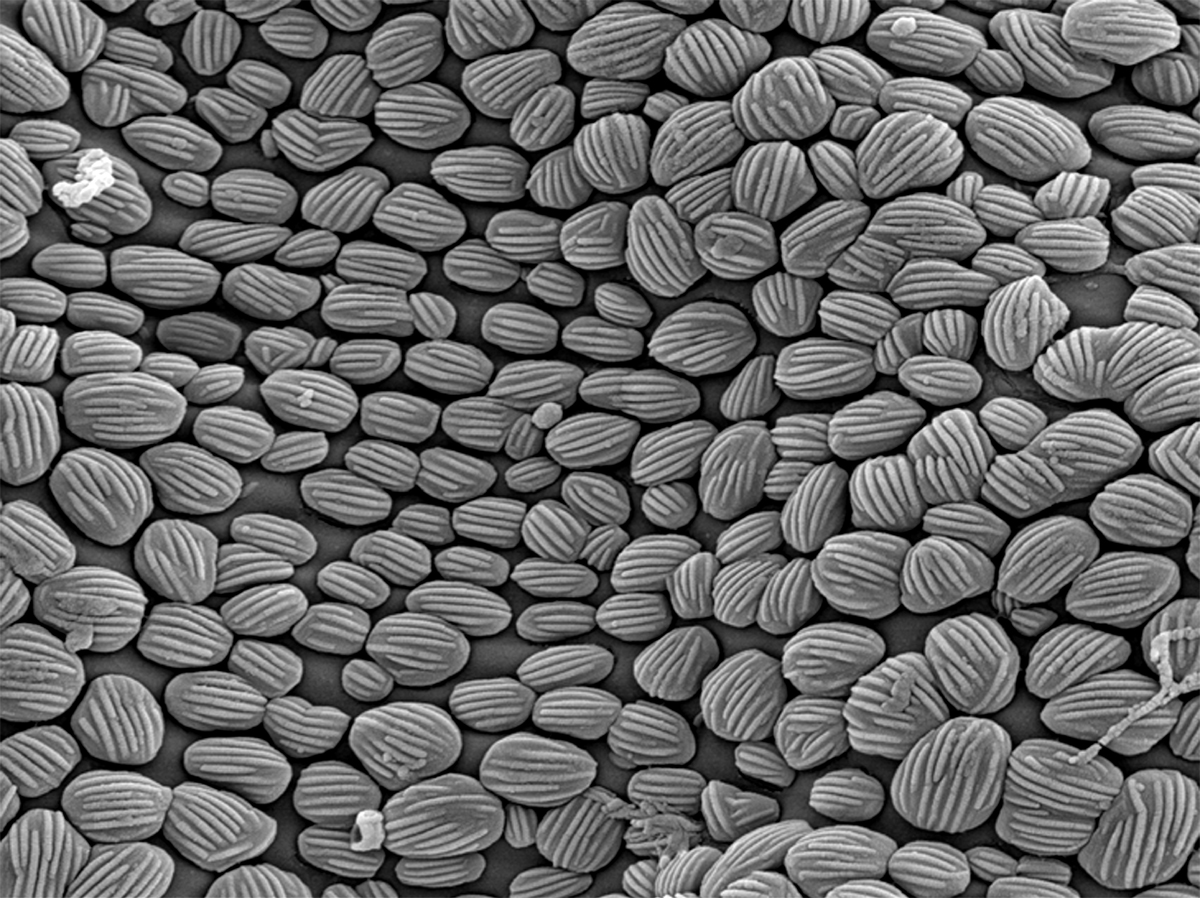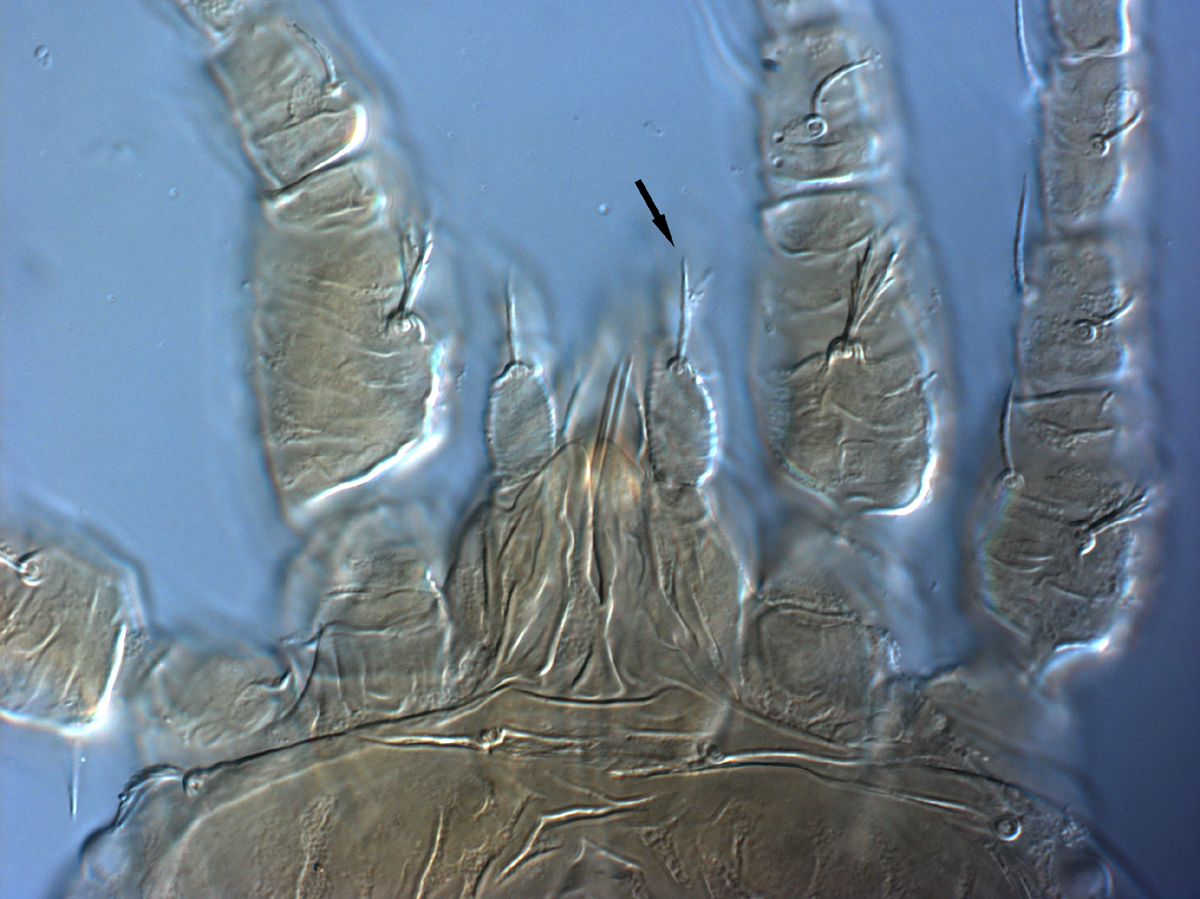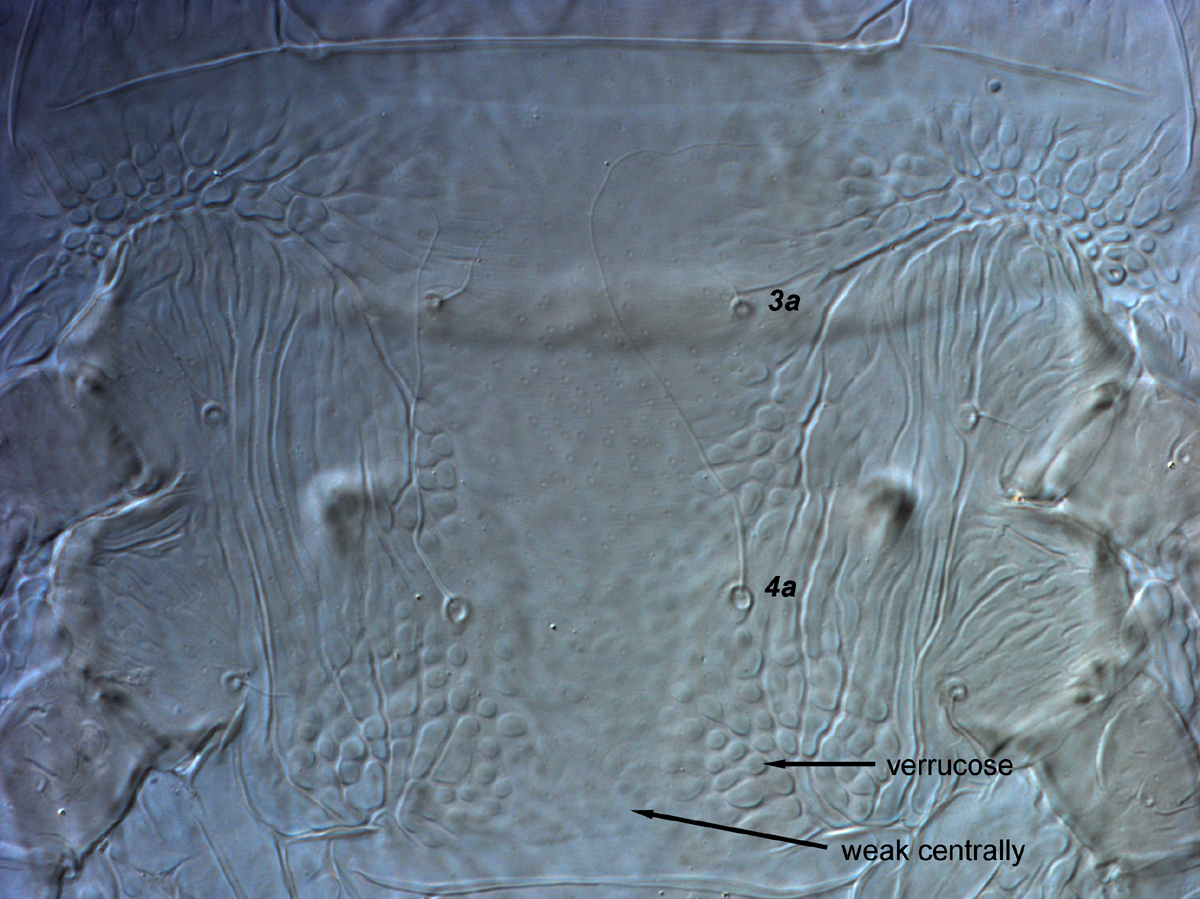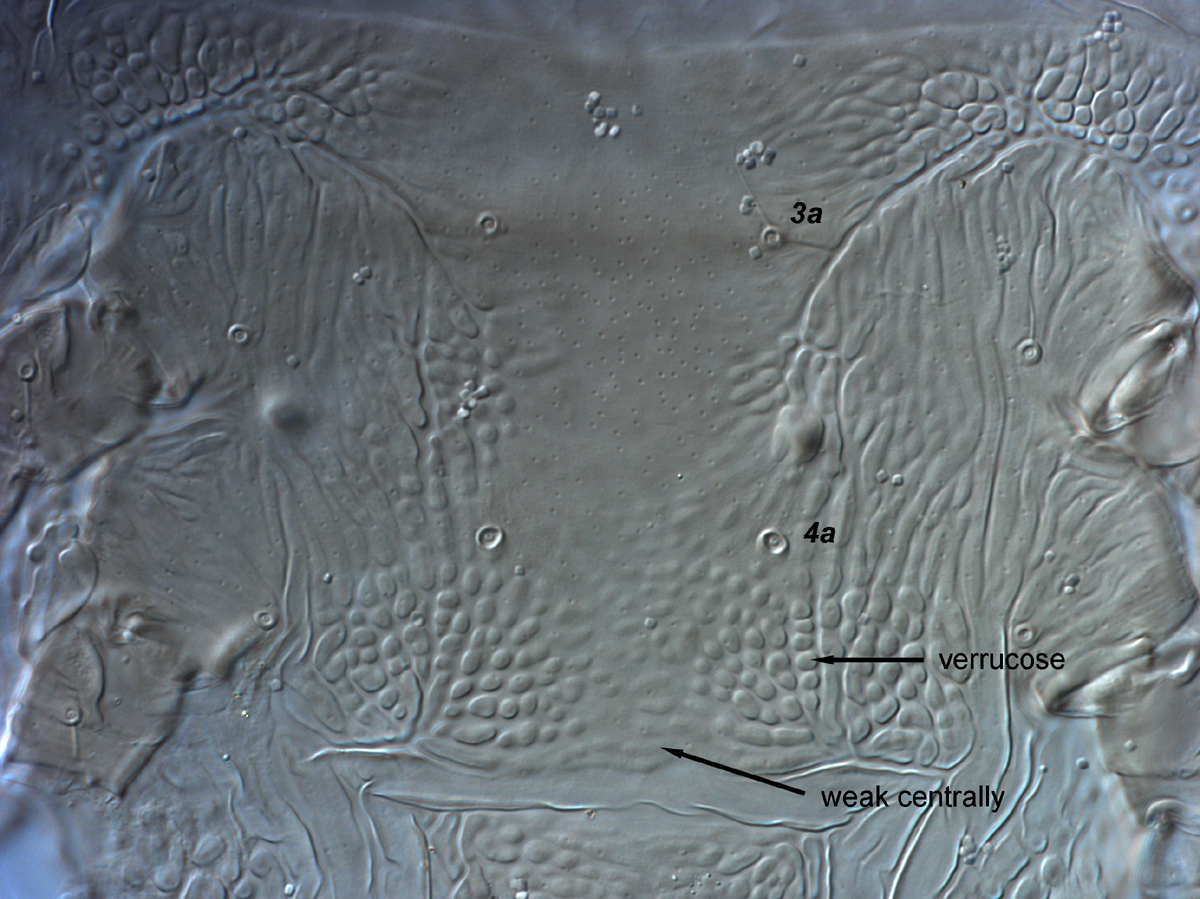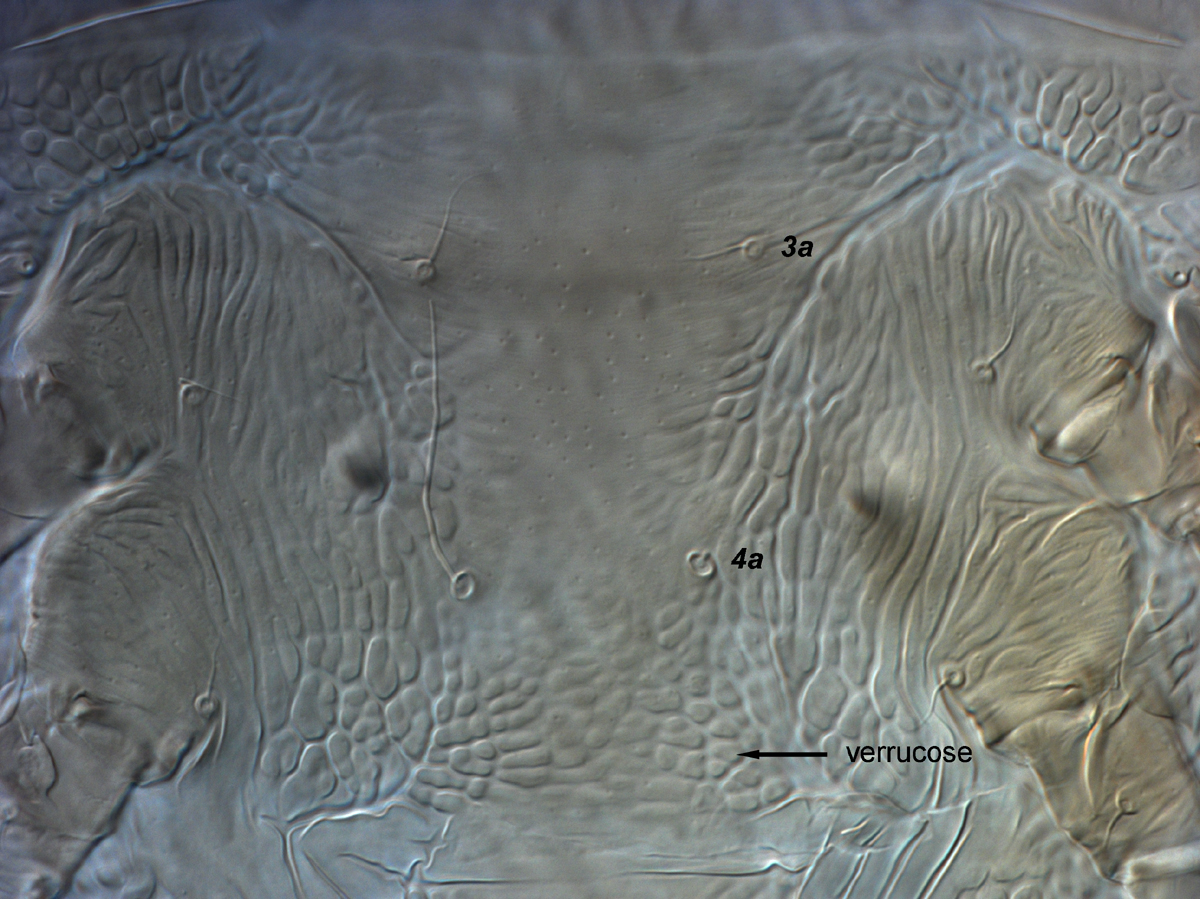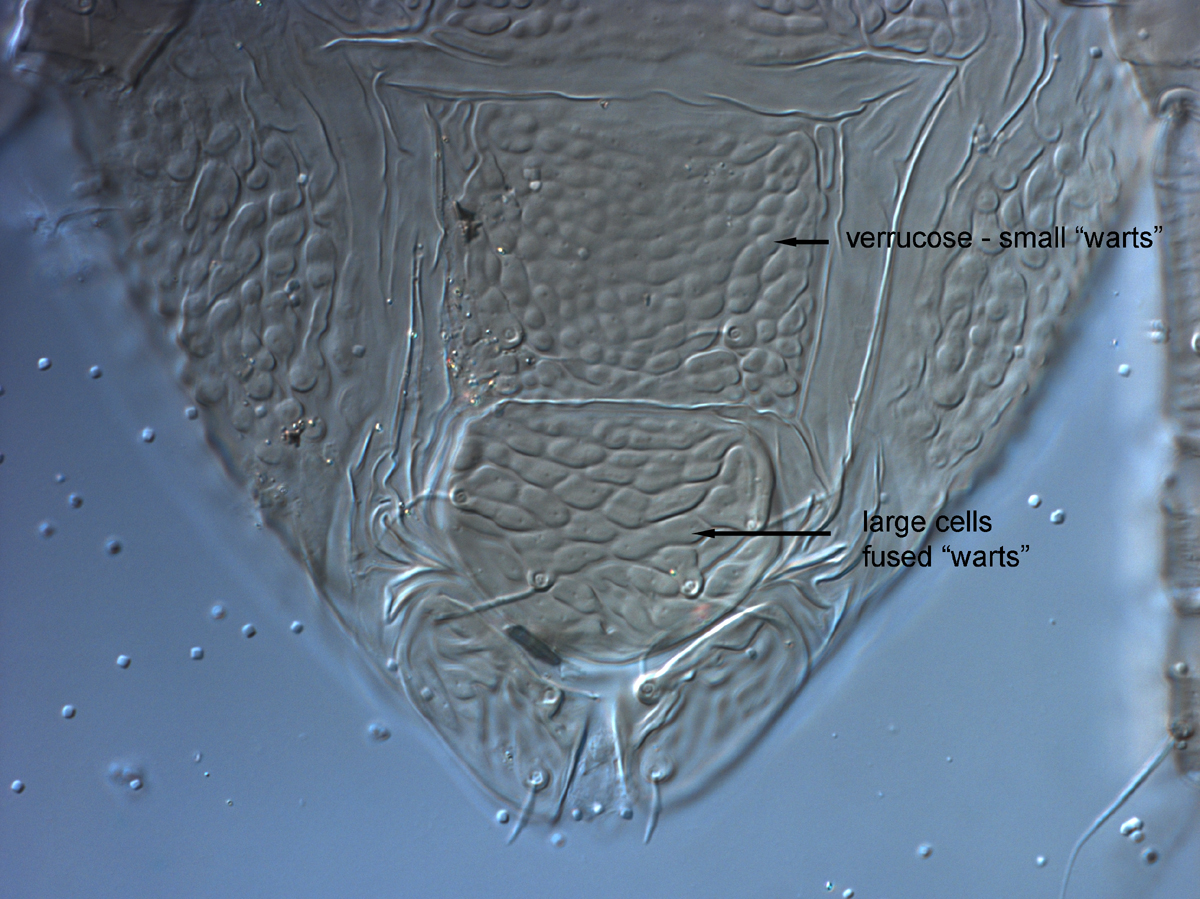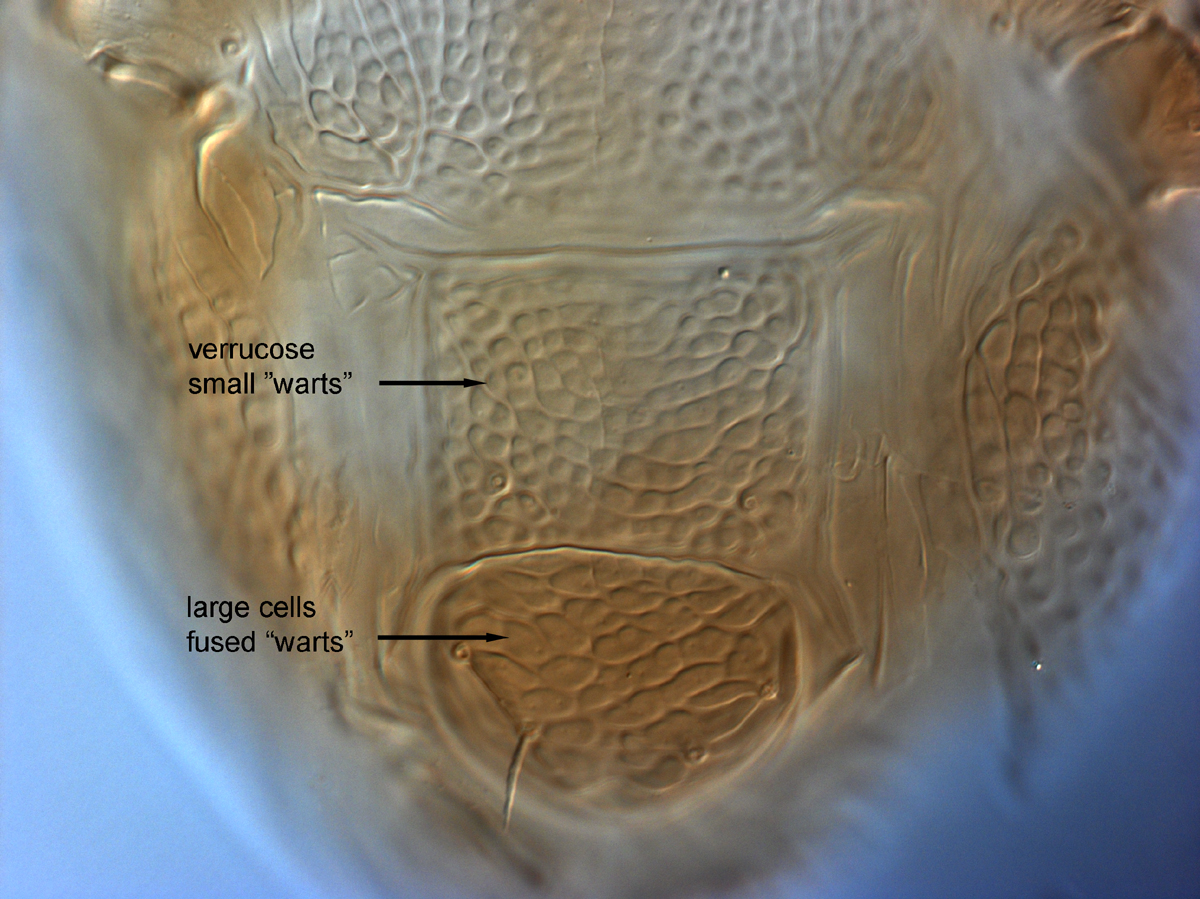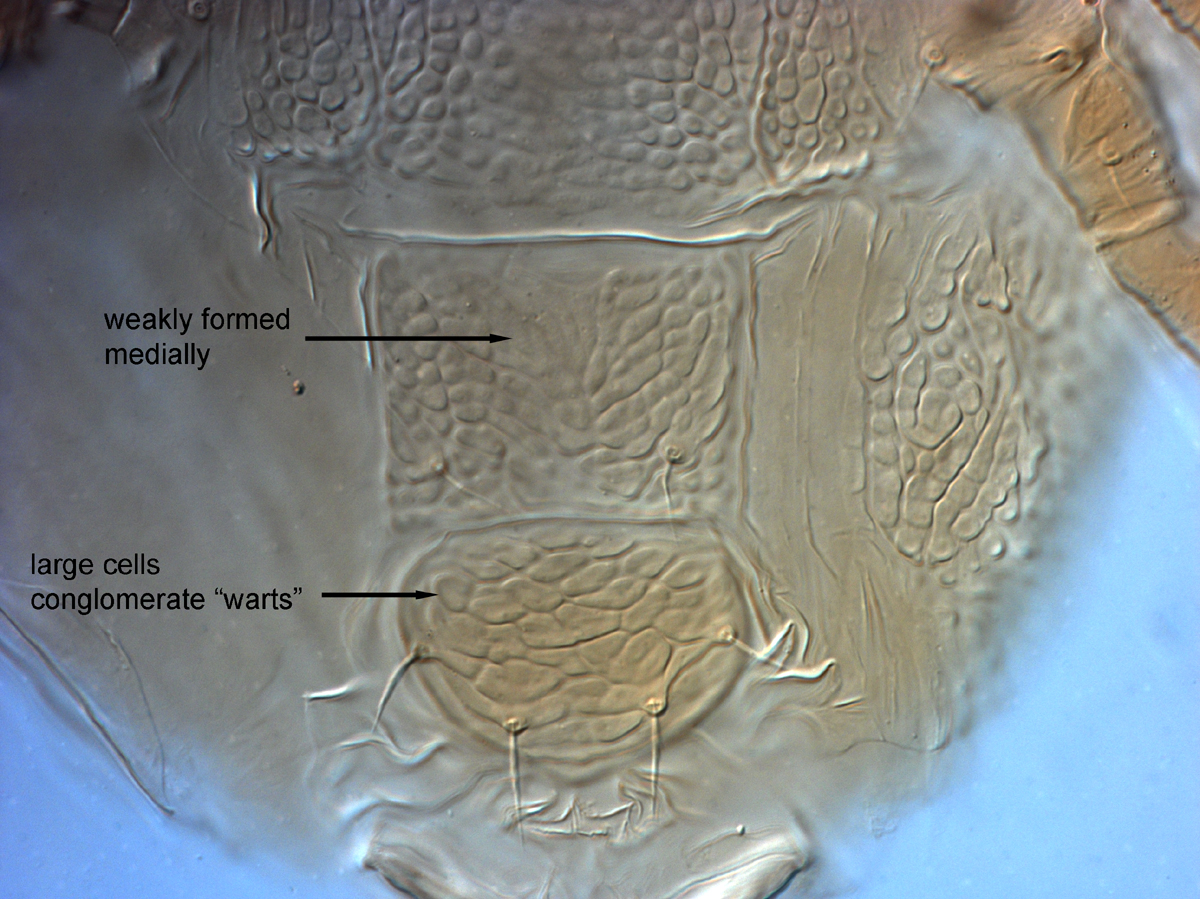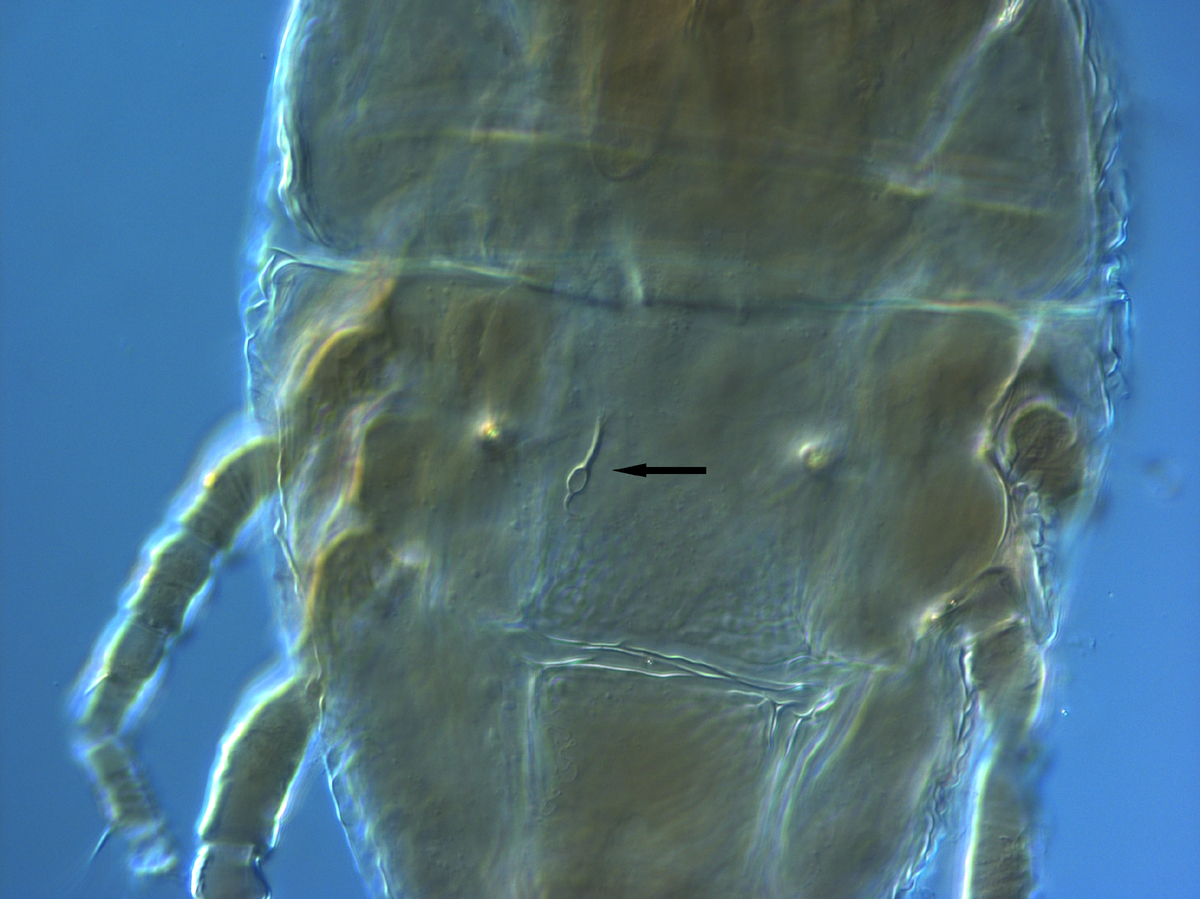Brevipalpus yothersi
|
Fig. 1. Brevipalpus yothersi, adult female dorsum. |
|
Fig. 2. Brevipalpus yothersi, adult female dorsum. |
|
Fig. 3. Brevipalpus yothersi, adult female dorsum. |
|
Fig. 4. Brevipalpus yothersi, adult female prodorsum. |
|
Fig. 5. Brevipalpus yothersi, adult female anterior dorsal opisthosoma. |
|
Fig. 6. Brevipalpus yothersi, adult female anterior dorsal opisthosoma. |
|
Fig. 7. Brevipalpus yothersi, adult female anterior dorsal opisthosoma. |
|
Fig. 8. Brevipalpus yothersi, adult female central dorsal opisthosoma. |
|
Fig. 9. Brevipalpus yothersi, adult female posterior dorsum. |
|
Fig. 10. Brevipalpus yothersi, adult female microplates on dorsal cuticle (15,000 X). |
|
Fig. 11. Brevipalpus yothersi, adult female dorsal seta on palp femurogenu (indicated by arrow) (paratype). |
|
Fig. 12. Brevipalpus yothersi, adult female venter, between coxae III-IV. |
|
Fig. 13. Brevipalpus yothersi, adult female venter, between coxae III-IV. |
|
Fig. 14. Brevipalpus yothersi, adult female venter, between coxae III-IV. |
|
Fig. 15. Brevipalpus yothersi, adult female posterior venter. |
|
Fig. 16. Brevipalpus yothersi, adult female posterior venter (paratype). |
|
Fig. 17. Brevipalpus yothersi, adult female posterior venter (paratype). |
|
Fig. 18. Brevipalpus yothersi, adult female spermatheca, indicated by arrow (paraytpe). |
Authority
Baker
Species group characters
Brevipalpus phoenicis species group
Dorsal opisthosomal setae f2 absent; tarsi II with 2 solenidia (one adaxial, one abaxial). Palps four segmented, setal formula 0-1-2-3(1s+2e) (s = solenidion, e = eupathidium).
Setal formula for legs I-IV (coxae to tarsi): 2-2-1-1, 1-1-2-1, 4-4-2-1, 3-3-1-1, 5-5-3-3, 9(1)-10(1)-5-5. Leg chaetotaxy: feI-II d, l', v', bv", fe III d, ev', fe IV ev'; ge I-II d, l', l", ge III-IV l'; ti I-II d, l', l", v', v", ti III-IV d, v', v".
Distribution based on confirmed specimens
Argentina, Australia, Bangladesh, Belgian Congo, Brazil, Burma, China, Colombia, Costa Rica, Cuba, Dominican Republic, Ecuador, El Salvador, Ethopia, France, Guatemala, Honduras, India, Indonesia, Israel, Malaysia, Mexico, Nigeria, Pakistan, The Philippines, Puerto Rico, Spain, Sri Lanka, Thailand, Trinidad, USA, Venezuela
Species characters
Adult female habitus
Figures 1, 2, 3
Prodorsum
Central (Fig. 4): cuticle with strong areolae
Sublateral (Fig. 4): posterior region with reticulation forming large cells; anterior region weakly reticulate to setae v2
Opisthosoma
c1-c1 to d1-d1: cuticle smooth to weakly reticulate (Figs. 5, 6, 7)
d1-d1 to e1-e1: cuticle weakly reticulate and/or wrinkled (Figs. 5, 6, 7, 8)
e1-e1 to h1-h1: cuticle usually with strong chevrons (V-shaped folds) becoming weaker towards h1 (Figs. 8, 9)
Sublateral: cuticle reticulate with regular cells becoming longitudinally elongate towards posterior (Figs. 8, 9)
Dorsal microplates
Separate individual oval plates, with series of distinct parallel ridges on dorsal surface (Fig. 10)
Palp
palp femur with barbed, setiform dorsal seta (Fig. 11)
Venter
Setae 4a-ventral plate (Figs. 12, 13, 14): cuticle uniformly verrucose, with separately formed rounded "warts"; often weaker centrally
Ventral plate (Figs. 15, 16, 17): cuticle uniformly verrucose, with separately formed small rounded "warts"
Genital plate (Figs. 15, 16, 17): uniformly verrucose to verrucose-reticulate, with large cells formed by fused or conglomerate "warts"
Spermatheca
A long narrow, convoluted duct, ending in a sclerotised oval vesicle with a thick distal stipe (Fig. 18)
Hosts based on confirmed specimens
This species has a large number of host plants in a diversity of families, many of which are of economic importance (Beard et al. 2015 - see below).
The most important host plant family for this mite is the Citrus family - Rutaceae (Citrus aurantifolia, C. limon, C. medica, C. reticulata, C. sinensis, Citrus spp., Poncirus trifoliata).
Other important hosts include: Arecaceae (coconut; Cocos nucifera); Asteraceae (sunflower; Helianthus annuus); Caricaceae (papaya; Carica papaya); Juglandaceae (walnut; Juglans regia); Lauraceae (avocado; Persea americana); Malvaceae (okra, hibscus flowers; Hibiscus spp.); Moraceae (fig leaf; Ficus spp.); Musaceae (banana; Musa spp.); Myrtaceae (guava; Psidium guajava); Passifloraceae (passionfruit; Passiflora sp.); Rosaceae (loquat; Eriobotrya japonica); Theaceae (tea; Camelia sinensis); Vitaceae (grapes; Vitis spp.)
Other host families include: Amaryliidaceae, Apocynaceae, Araceae, Bignoniaceae, Euphorbiaceae, Fabaceae, Oleaceae, Rubiaceae, Sapindaceae.
Remarks
Previously listed as Brevipalpus phoenicis species group sp. B.
It has recently been shown that Brevipalpus yothersi has a strong association with citrus leprosis virus complex and it is suggested to be the vector for the three known cytoplasmic leprosis viruses (citrus leprosis virus C (CiLV-C), citrus leprosis virus C2 (CiLV-C2), and Hibiscus green spot virus 2 (HGSV-2)) (Roy et al. 2015).
Beard, J.J., Ochoa, R., Braswell, W.E. & Bauchan, G.R. (2015) Brevipalpus phoenicis (Geijskes) species complex (Acari: Tenuipalpidae) — a closer look. Zootaxa, 3944(1), 1-67. (open access: http://www.mapress.com/zootaxa/list/2015/3944%281%29.html)
Roy, A., Hartung, J.S., Schneider, W.L., Shao, J., León, M.G., Melzer, M.J., Beard, J.J., Otero-Colina, G., Bauchan, G.R., Ochoa, R. & Brlansky, R.H. (2015) Role bending: complex relationships between viruses, hosts and vectors related to citrus leprosies, an emerging disease. Phytopathology accepted. (http://dx.doi.org/10.1094/PHYTO-12-14-0375-FI)

